Saint Julien Elegance
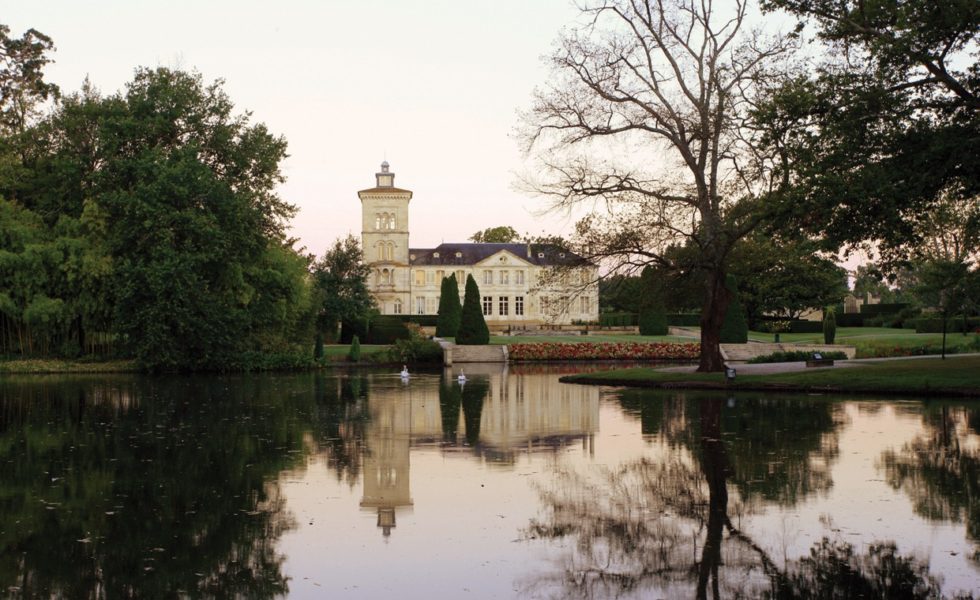
17 vintages of Château Lagrange (and more)
by Panos Kakaviatos for wine-chronicles.com
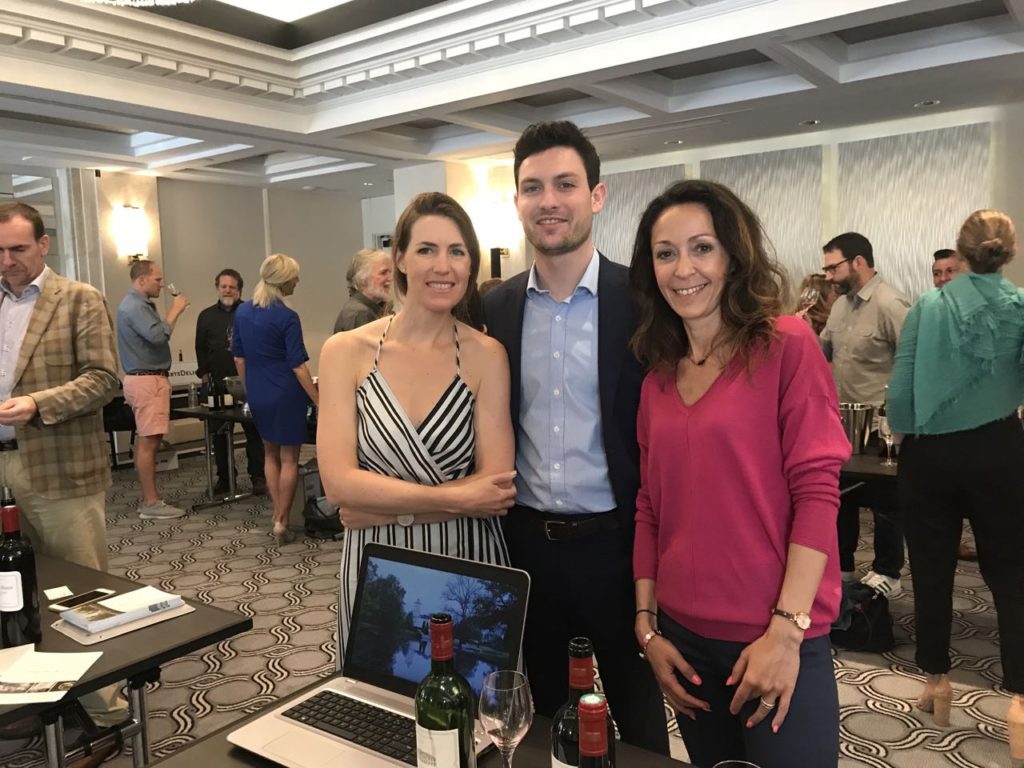
Heart’s Delight tasting, Sofitel, Washington D.C. with – from left to right – Daina Paulin of Château Haut Bailly, wine promoter Arnaud Bellone, and Charlotte Denjean of Château Lagrange in Saint Julien
Dinner participants included friends and wine connoisseurs and vintages ranged from 2015 to 1985, which was crafted just two years after current owner the Suntory Group purchased Lagrange to bring about a Renaissance to what could be described back then as a Sleeping Beauty. This article from a few years back for Decanter China by Jane Anson sums this story nicely.
A fine white
Foie Gras Terrine Salted Biscuit, Pickled Rhubarb, Caramelized Rhubarb Coulis / This was a nice size portion of foie gras terrine and its richness was matched well by the vibrant energy of the 2008 vintage. The riper density of the 2009 proved another fine match. The 2010 was at first a bit disjointed but time in glass brought forth its superior charms: a wine of larger scale than the two preceding, and in need of a bit more cellaring before being ready. All in all, the 2009 provided the most pleasure in this flight.
Second Course
Château Lagrange 2006, 2005, 2004
Veal Cheek & Ricotta Ravioli with Wild Morels, English Peas, Sunchoke Purée, Mushroom Veal Jus, Crispy Sunchokes and Pea Tendrils / What a delicious second course, the ravioli tasted home made fresh, with a most tender veal. The mushrooms lent a fine tertiary touch complementing especially the 2004, which was perhaps my least favorite of the flight, even if it was charming and exuded some red fruit brightness. The 2006 was my second favorite of the flight. For several years, many 2006s from the Médoc have seemed closed, but many seem to be opening up, and exhibit density and “thickness” on the palate, more so than the 2004, without being heavy handed. The 2005 proved the most precise and crystal clear in expression of fruit and tannic finesse, and had the longest finish of the three: still youthful but just beginning to enter an early drinking window.
Third Course
Château Lagrange 2003, 2002, 2000
Mallard Duck Breast with Duck Confit Wild Rice, Braised Kale and Dried Cherry Jus / My goodness was this duck savory and rich, juicy and meaty and… delicious. The jus was great, too. 2003 seemed to please some palates, given the cooler soils of Lagrange maintaining some freshness, but I liked the linearity of the 2002 just as much. Of course the 2000, with superior body and depth compared to the two others, shined brightest, and it was a pity that one of the bottles was a bit off.
Fourth Course
Château Lagrange 1996, 1990 (small pour), 1989, 1985
Duo of Elysian Fields Lamb with Braised Shank Ragu, Royal Trumpet Mushrooms, Duchess Potatoes, Asparagus, Heirloom Carrots and Red Wine Jus / Another excellent course from the chef at this superb Washington D.C. venue. The braised ragout and mushrooms complemented well the older vintages. We had a rather delicate and charming 1985, with tertiary aspects, even smoky, that went well with the lamb. The 1989 was more robust, with ripe black fruit rather than red, and it pleased many palates. I liked one bottle of the two 1990s that came at the last moment: Charlotte brought a bottle from the estate as did Ben Giliberti of Calvert Woodley, so many thanks to Ben for bringing that bottle, which was more focused and just delicious. It was a close call to pick my favorite from this flight, a toss up with the 1996, more youthfully tannic and yet getting a bit tertiary. It stood up best to the weight of the dish, but the 1990 was the most fun.
Final Course
Château Lagrange 2011, 2014, 2015
Artisanal Cheese Plate with Blu di Bufala, Purple Haze and Thomasville Thomme / We went back to the future for the cheeses. Although the 2015 has the most potential charm, I liked the 2014 tonight most for its linearity and purity of fruit that matched well the richness of the cheeses. The 2011 seemed a tad closed, so would see a better day down the road. Sure, the 2015 may be the best wine, but it is too early to call. I tried it again a few days later at a Heart’s Delight auction event, and it was delicious, but I still like the focus of the 2014 more at this early stage.
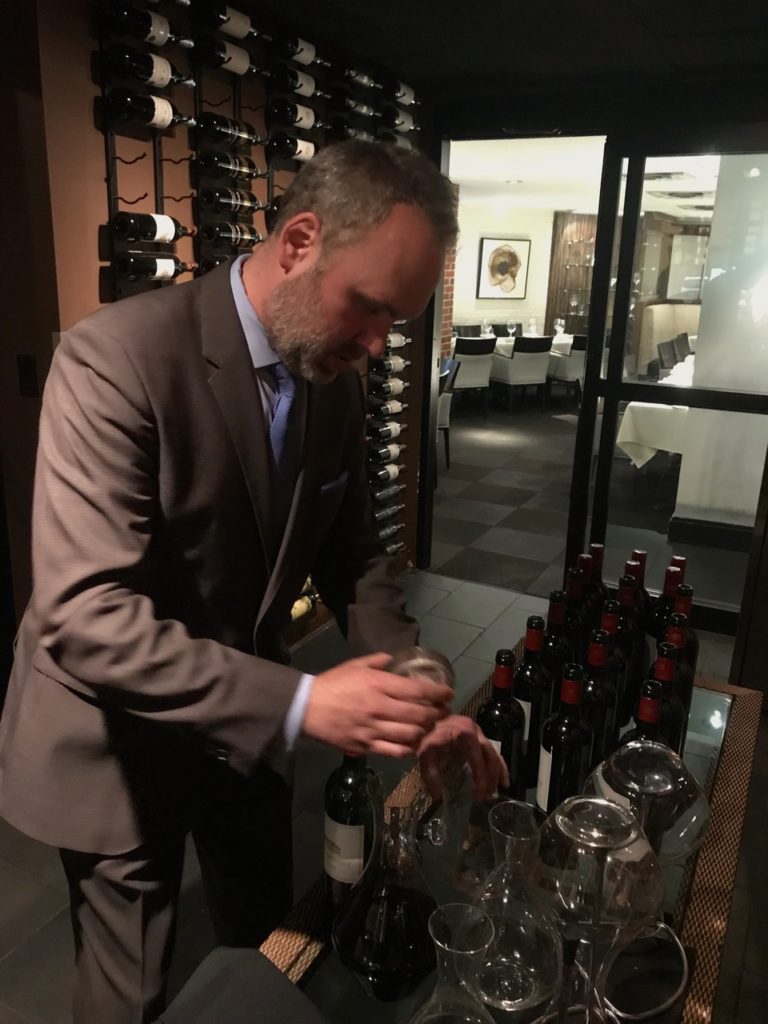
Bravo to Black Salt director Jim Sole for taking extra care to double decant many of the 17 vintages we enjoyed.
Once again, many thanks to Charlotte and the team of Château Lagrange for shipping some 48 bottles (plus the one bottle of 1990) to Washington D.C. to share with us.
Kudos to Jim Sole and his team at Black Salt not only for a great dinner and excellent service throughout, but also for superb preparation ahead of time. I had arrived with wine educator Maria Denton a few hours before to go through the bottles, but Jim had already opened most and double decanted recent vintages. Older vintages we opened just before service, to let them breath and be rid of deposits of which there were not that many. And thanks to all who came! I trust that we had a great time.
About Château Lagrange
With an altitude of 24 metres, the centre of the domain marks the highest point of Saint Julien. The estate covers 182 hectares (450 acres), of which 120 hectares (292 acres) are under vine, located in the west of the Saint Julien appellation. Most of the plots benefit from a drainage system. The 120 hectares under vine form a single block, planted on the region’s famous Günz gravel soils, with some clay and sand in certain areas. This variation in soils – along with a range of levels of vine maturity thanks to Suntory’s replanting programme – has led to the vines being managed plot by plot, before being picked by hand and fermented separately.
Grapes
Cabernet Sauvignon best expresses its character in the Médoc. When this grape variety is planted in the estate’s deep gravelly soils, it constitutes the very backbone of the wines of Lagrange – and ensures excellent aging potential. The best vineyard terroirs are reserved for this grape, which covers 67% of the estate. As for the Merlot, this earlier variety does well on cooler soils, making up 28% of the vineyard. Then for a final touch, 5% of Petit Verdot lends complexity to the wines. The white wine vineyard covers 7.5 hectares (19 acres) and is planted with Sauvignon Blanc (60%), Sauvignon Gris (20%) and Sémillon (20%).
Viticulture
A high density of plantation – 7,500 to 10,000 vines per hectare – rigorous pruning, de-leafing, thinning out in July and traditional ploughing contribute to rich and concentrated grapes. Traditional hand picking allows the estate to sort bunches and ensure that only the best of them arrive healthy for the press and fermentation. The harvest is handpicked into individual crates and then sorted manually and by an optical sorting machine when necessary.
Vinification
Traditional Bordeaux vinification is carried out in 92 temperature-controlled stainless steel vats of varying capacities, thus allowing separate vinifications to respect the character of each plot and soil-type. Lagrange thus joins a growing number of quality minded Bordeaux estates that carry out parcel-by-parcel harvesting and vinification. Placing all or part of a given plot into its own vat means that the estate is able to harvest at or near optimum ripeness.
The total vatting time varies from 16 to 28 days, depending on tannic development in fermenting wines. The temperature of fermentation never exceeds 28°C to preserve finesse and freshness, which is something I notice at this estate more often than not. The selection of press wine is performed “barrel by barrel” allowing a wider choice range during the blend tastings.
Following consultation with the estate’s oenologist, the ever present and talented Eric Boissenot, the wines are blended a few months after harvest, to promote harmony of tannins and plot origins. Wines are aged in French oak barrels, of which 60% are renewed each year. They are racked every three months. During the 20-month maturation period, the cellar is maintained at 15°C and ambient humidity is carefully controlled. The second wine, Les Fiefs de Lagrange, spends a year in oak, 20% of it new, and the white wine usually – Les Arums de Lagrange – ages in 30% new oak.
History
The estate was once owned by the ultra famous Baron de Brane, the Bordeaux parliament member who once owned the current estate of Mouton-Rothschild among other properties. His heart, so the saying goes, was at Calon-Ségur in Saint Estèphe, which he had also owned. The Tuscan-style tower that has become the emblem of Château Lagrange was built in 1820 by the Italian-born French architect and designer Louis Tullius Joachim Visconti.
From Jefferson to Duchâtel
During a trip to Bordeaux in 1785, the later-to-be 3rd U.S. President Thomas Jefferson included Lagrange among his “Third Classified Growths” in his own rating, pre-dating the 1855 Classification (which also ranked Lagrange a Third Growth).
Drainage system
In an early advance for Bordeaux, a certain Count Charles Tenneguy Duchâtel purchased the property in 1842 and introduced a drainage system that helped to confirm the estate’s 1855 classification. It improved the wine immensely, and was quite an innovation for the mid 19th century.
A period of decline
A series of financial misfortunes led to decline, with parts of the property sold well into the 20th century. In 1970, for example, 32 hectares were sold to Château Ducru Beaucaillou. Henri Martin of Château Gloria also acquired parts of the estate for his excellent wine. By 1983, the remaining holdings of Lagrange were purchased by the large Japanese company, Suntory.
Renaissance
Japanese liquor giant Suntory ended this long period of mediocrity with Marcel Ducasse as director and winemaker. Large budgets from Suntory allowed him to replant vineyards and improve cellar conditions, leading to a Renaissance for Château Lagrange.
About Black Salt
 Wine Chronicles
Wine Chronicles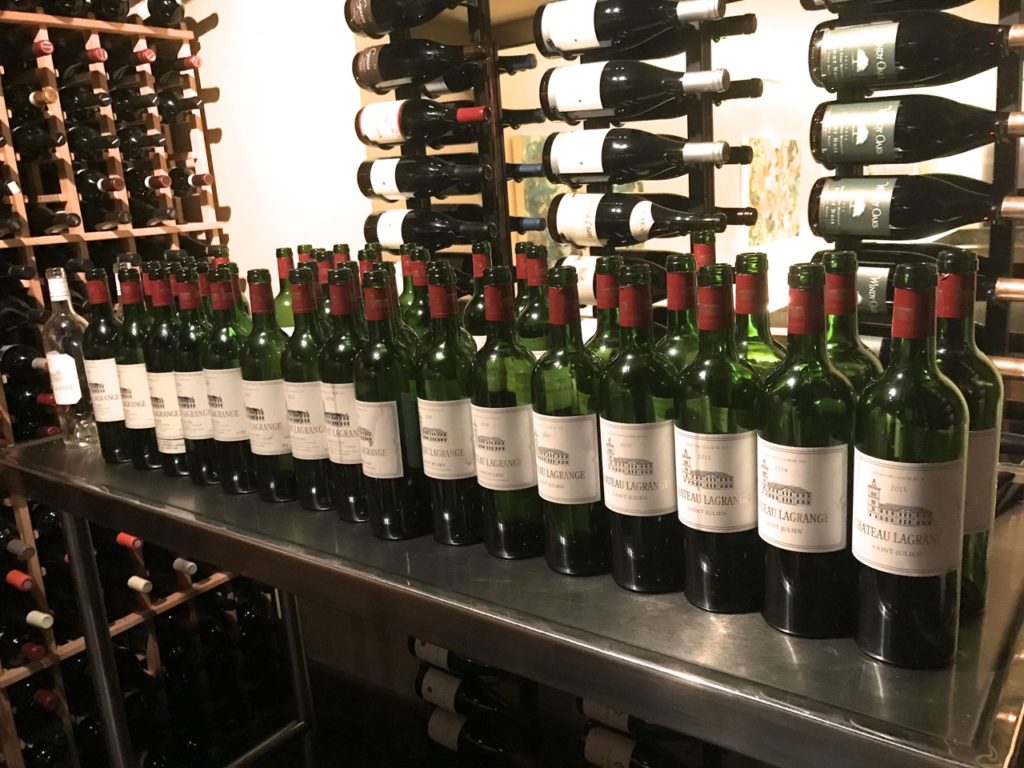
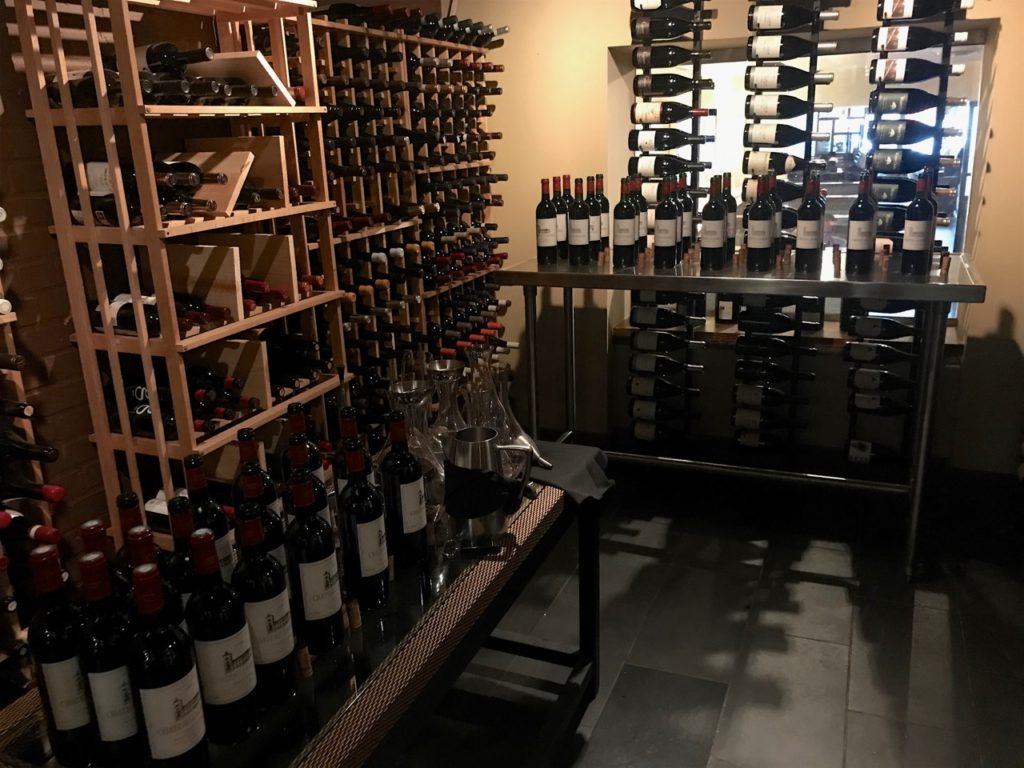
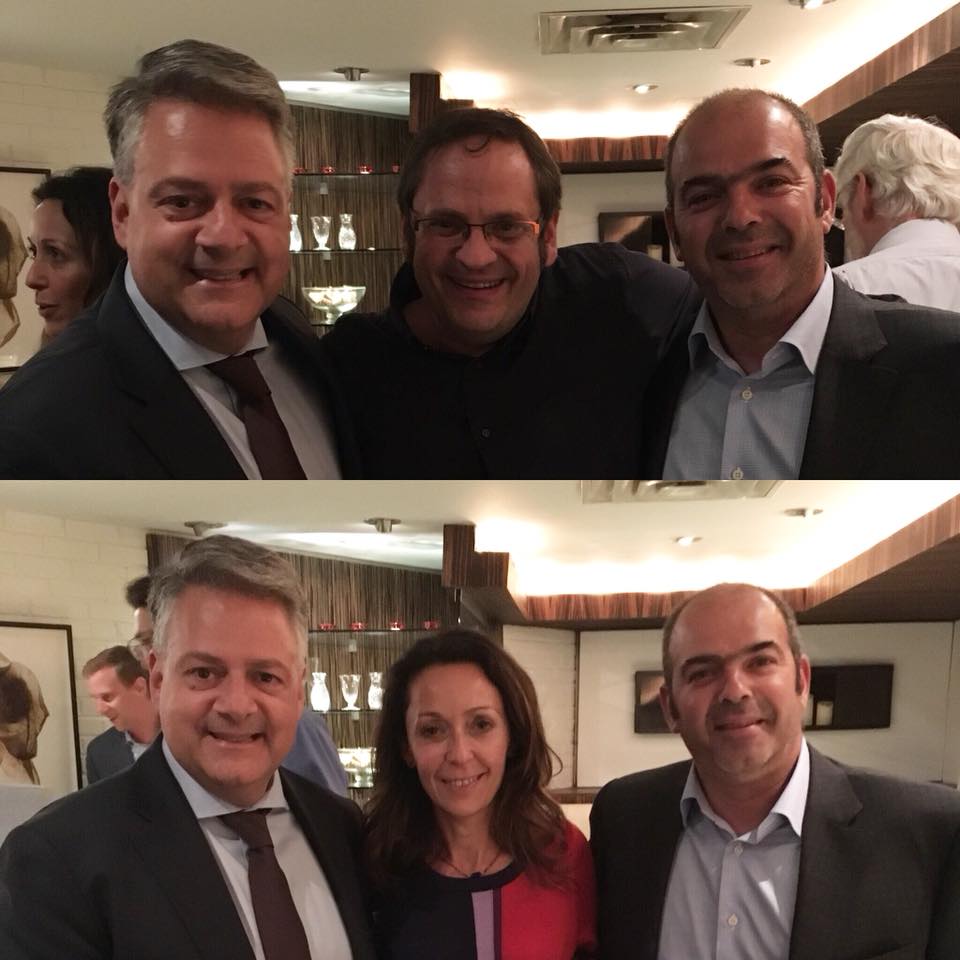
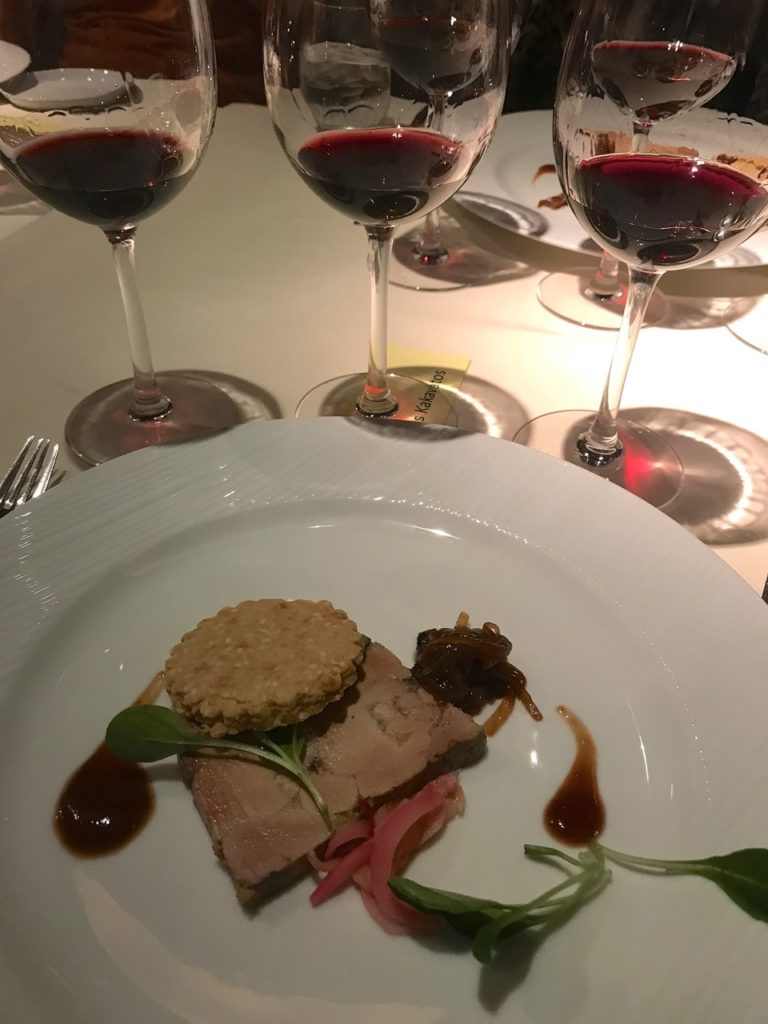
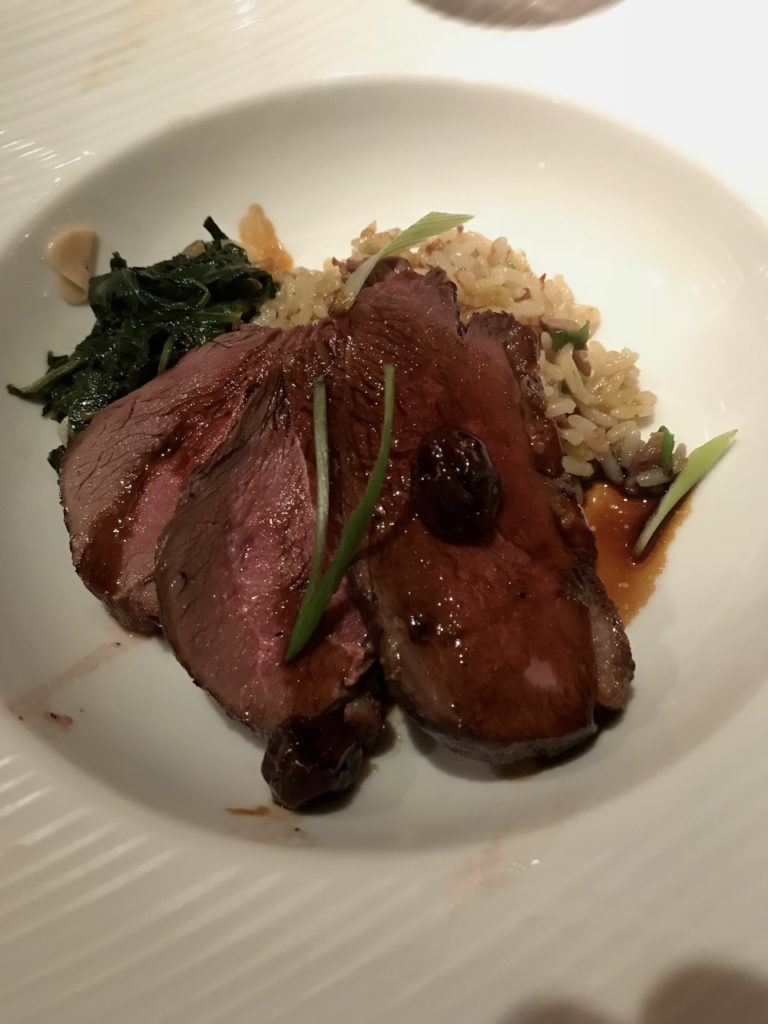
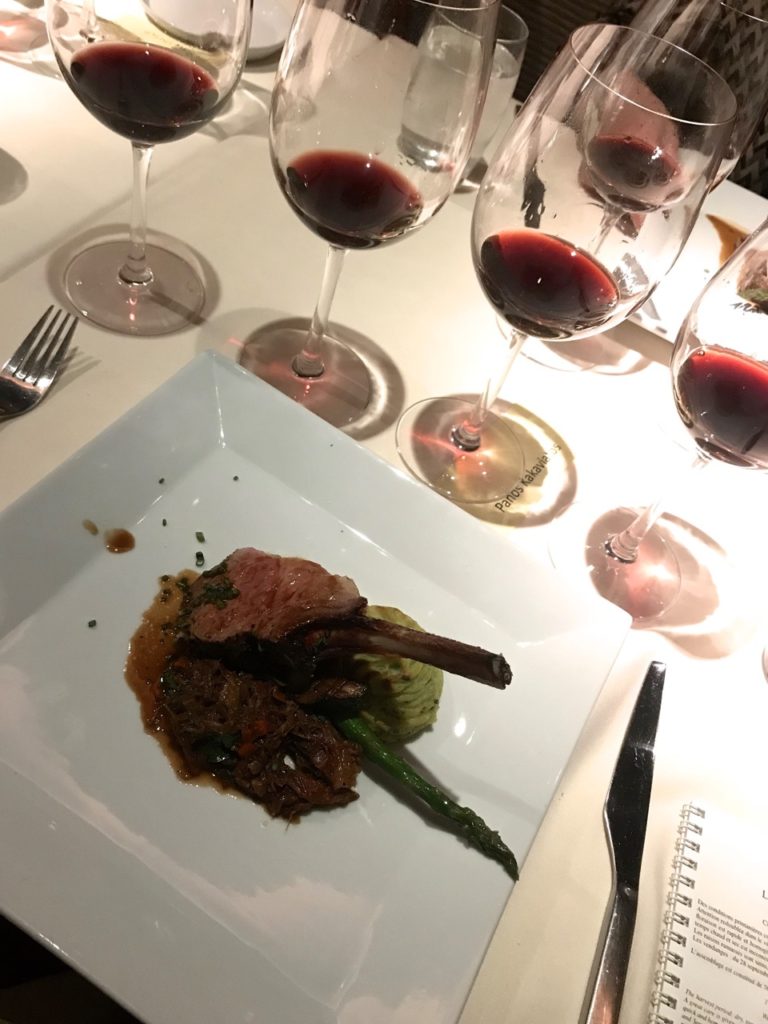
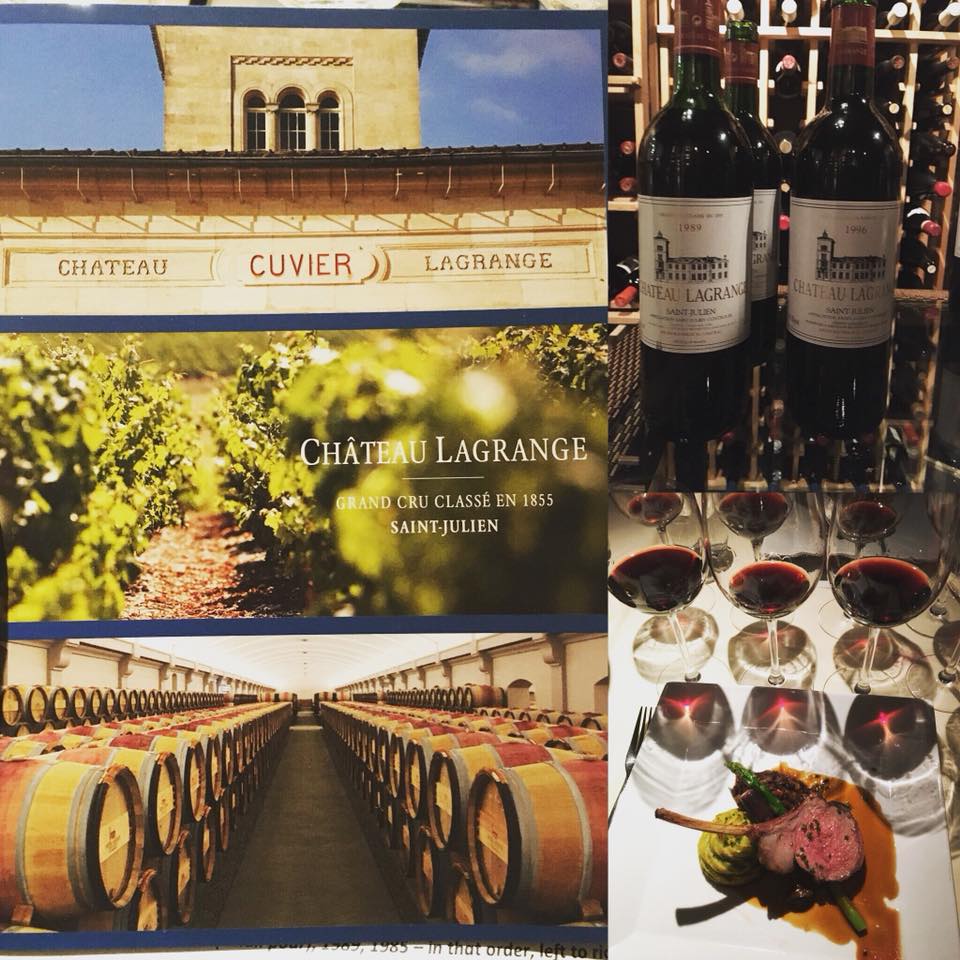
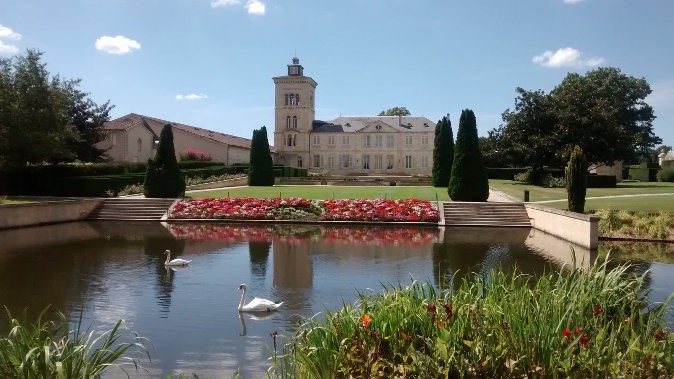

Sounds absolutely fantastic. Would love to have more of this here in Brazil, not just in the form of dinners that cost more than a fund-raising dinner in the USA….Taxes and import duties in Brazil are just insane. There are some importers of excellent Grand Cru’s, such as Grand Cru, Mistral, Decanter, and more recently VINDAME (https://www.vindame.com.br).
Would invite Wine Chronicles to have a look at what is happening in Brazil…if only to be even more merry with the situation elsewhere! Cheers!
Would love to check out the wines of Brazil! Thanks for posting ☺️.